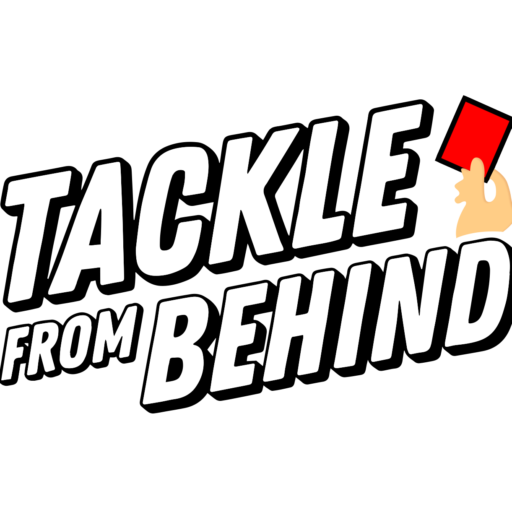Barcelona, Juventus, Manchester United, Real Madrid, all these clubs have one thing in common, and it’s not their sporting success but their debt situation.
Despite their immense popularity and passionate fanbases, many major football clubs find themselves burdened by significant debt.
This article explores the reasons behind this trend, the financial workings of football clubs, and the consequences of such debt.
Why do Football clubs end up in debt?
Before diving into debt let’s first see how a football club makes money.
How Do Clubs Make Money :
There are 3 Major Sources of Income available for any club: Broadcasting Revenue, Commercial Revenue, and Matchday Revenue.
Broadcasting Revenue
This is a significant chunk of the pie, coming from broadcasters who purchase rights to telecast matches. The more viewers a club attracts, the higher its share of the revenue.
The 2019 World Cup match between India and Pakistan was watched by 273 million people Worldwide. If we compare this to a Premier League match between Manchester United and Liverpool it was watched by 700million viewers Worldwide.
That’s why Sky Sports paid $6.2 billion to the Premier League to telecast its matches from 2019 to 2022.
Premier League distributes this money equally among all the participating clubs and if any club’s matches are telecasted more then they also get extra money for that.
Clubs also earn a significant sum of Broadcasting revenue from European competitions such as the UEFA Champions League.
When Man City reached the Finals in 2021 then he earned an extra £100 million just from the Champions League.
Thus, not being able to play European football is a huge financial loss for any club.
Commercial Revenue
Commercial Revenue is the 2nd Source of Income which includes, Merchandise Sales, Licensing deal, Sponsorship etc.
Big companies such as Standard Chartered, Emirates, and Qatar Airways pay money to football clubs to put their brand name on the club’s jerseys.
Apart from this, companies like Adidas, Nike, and Puma buy Merchandising Rights from Clubs so that they can make and sell replica jerseys of the Club and for this, the Clubs get a fixed amount annually.
For example, Adidas pays Real Madrid €110 Million every year for their merchandising rights, and with bonuses, this figure can even go up to 150 million.
On the other hand, Emirates Madrid has to pay €70 Million every year to put their name on the Jersey.
Matchday Revenue
Matchday Revenue is the final source of Income for any club and it includes Sponsorship deals (Pitchside advertisement), and Most importantly Ticket sales.
VIP boxes, Season Tickets, Food, and beverages sold during matches all contribute to matchday revenue. This varies from club to club, the team that has better stadiums can earn more money through ticket sales.
Clubs also make money from stadium tours and by organizing various events at the stadium during the off-season.
Apart from this, clubs also get money from player sales and price money but usually, it is directly reinvested into the club to improve the squad and hence clubs do not consider it as a major source of income.
The Debt trap
Player Salaries and Transfer fees are the two major expenses for any club. In modern football, any first-team player’s wages are worth an average of €30-50million.
Transfer fees are touching astronomical figures for a first-team player.
Knowing they have a guaranteed income stream from broadcasting and sponsorships, clubs resort to debt financing to buy players or upgrade their stadiums.
Debt financing can be a strategic tool if managed well. It allows clubs to compete at the highest level by acquiring top talent or improving facilities. However, poor financial decisions can lead to a crippling debt burden.
What will happen if the club is unable to pay off its debt?
While extreme financial collapses are rare, considering the business model, there will arise a time when a football club will find itself in a financial mess.
The same happened with the Italian side Parma who were declared insolvent after a corruption scandal in April 2004 after which many new owners came in but in 2014-15 they were bankrupt and demoted to the 4th Division.
Clubs facing immense debt can be placed under administration, where control is transferred to external bodies to manage finances and club operations until a new owner is found.
Why Don’t they Shut the Club Down Completely?
A club can only repay debt if it remains operational. Shutting it down eliminates any chance of recovering finances.
The focus, therefore, is on finding new ownership, imposing sanctions like transfer restrictions, and restructuring finances to ensure the club’s survival and the debt’s eventual repayment.
This often involves financial restructuring, potentially bringing in new investors, and implementing stricter financial controls to avoid a repeat of past mistakes.
Conclusion :
Football clubs operate in a high-stakes environment where financial prudence is crucial. While debt can be a tool for growth, it requires careful management to avoid spiraling into a crisis.
The future of these clubs hinges on striking a delicate balance between ambition on the pitch and financial responsibility on it.
This tightrope walk between sporting success and financial stability is what makes the business of football so fascinating, yet precariously balanced.



